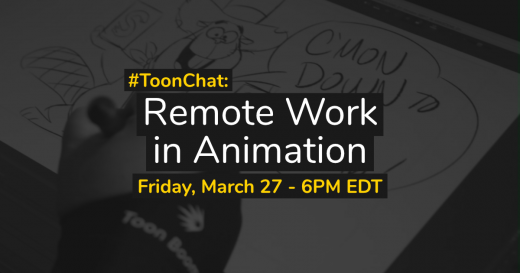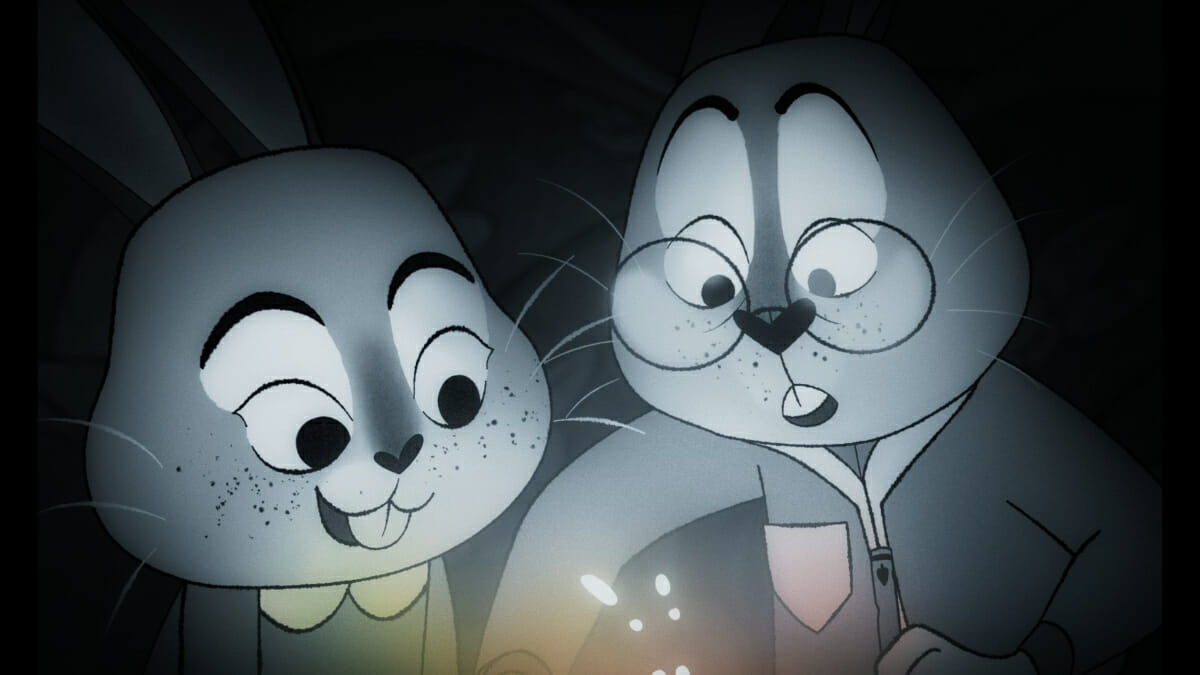
The short film Where Rabbits Come From takes place in a cold dystopian world. A rabbit father defies the authorities by trying to instill a sense of wonder into his daughter’s life, after her mother’s mysterious disappearance.
Studio Niloc produced and animated the short with a team based out of Montreal. The film was sponsored in part by Toon Boom, and made using Storyboard Pro and Harmony. We caught up with Studio Niloc’s Colin Ludvic Racicot (writer and director) as well as Hubert Lapointe (animation supervisor). In this interview, Colin and Hubert discuss what inspired the film as well as the process and techniques that went into the project.
Update: Where Rabbits Come From is currently available to stream to the public on the Omeleto YouTube channel, for consideration during awards season.
What inspired the story for Where Rabbits Come From?
Colin: I’ve always been inspired by the world of magic, in film history as well as in history in general. I thought it was a beautiful realm to explore. But the primary inspiration for the film was my experience as a father.
Through that experience, I felt a new range of emotions and imperishable memories that blossomed. With that in mind, I started writing the story, tackling a father-daughter relationship in a world where imagination was forbidden. I found it a very inspiring premise. That’s when Studio Niloc started developing the project in 2019.
What is Where Rabbits Come From about, and what should viewers take away from the film?
Colin: The film is set in a world where imagination is outlawed. We follow the story of Jaco, a widowed father who defies the authorities while trying to instill a sense of wonder into his daughter’s life.
We wanted to create a beautiful and nostalgic short film for all ages. My intention as a director was to put forward the importance of imagination in our daily lives. We should always stay young at heart, even as adults, and grow with the memories of the people that bring us joy.
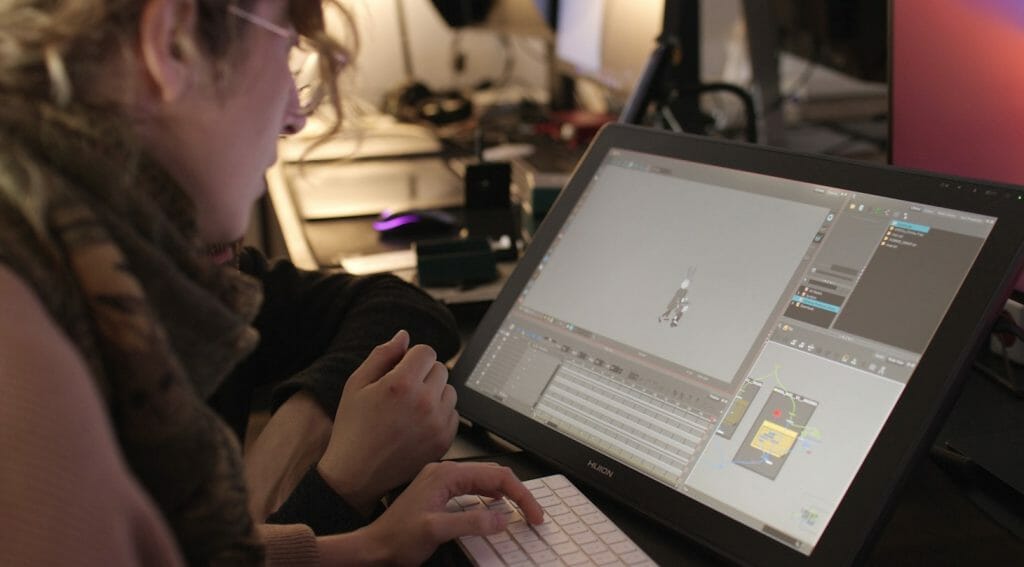
How did you get involved with the making of Where Rabbits Come From?
Hubert: I was introduced to the film’s director, Colin, through a mutual friend of ours. Colin was looking to assemble what would become the core team on the project. This assembly happened during the pandemic lockdown in Quebec, so the presentations were all virtual.
Despite seeing everything virtually, the quality of artistry that went into both the animatic and the early designs was obvious to me. I knew right away that I wanted to contribute my voice to what I thought looked like a very promising short film.
What was the process for getting the film made? How did you go about putting together the animation team?
Hubert: I was just finishing up a directing gig on a very commercial project at the time. I was excited to start work on a more organic, artistic pipeline that would foster creativity and encourage personal input from everyone on the team.
Colin had a very clear vision of what he was looking for while remaining very open to any technical or artistic tweaks that could benefit the project, both in quality and efficiency. Due to budget constraints, and the amount of complex animation that needed to be produced, a predominantly cut-out pipeline seemed to be the obvious way to go.
We mainly focused our recruiting effort on finding people that had a good knowledge of that animation technique. We also looked for candidates who were comfortable with a DIY approach, since the whole production was done remotely.
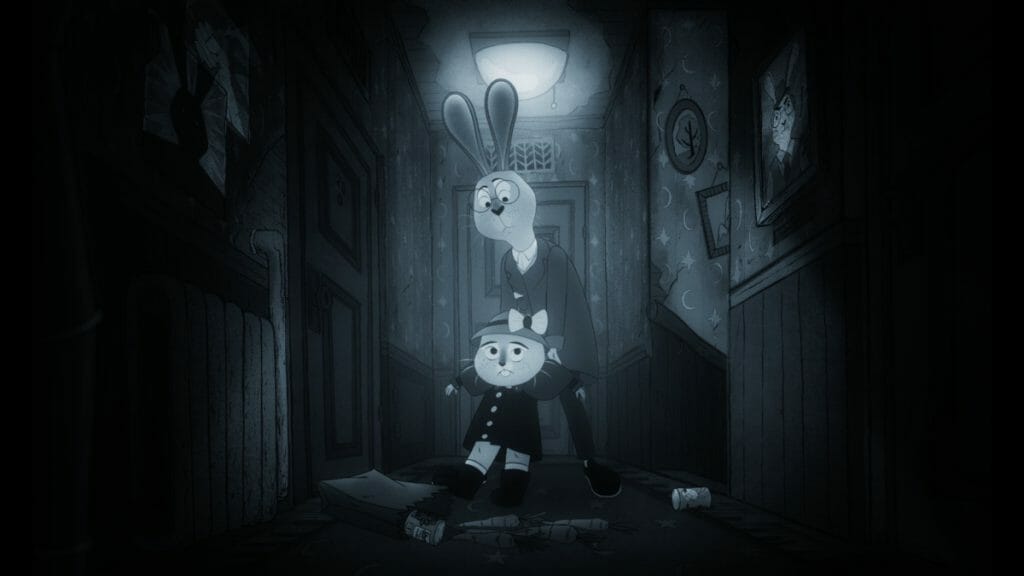
How did your team approach rigging and animating characters for the short?
Hubert: We decided to keep the rigging complexity to a minimum to enable animators to focus on redrawing when required instead of being caught up in technicalities. It’s something I experienced before on shows like Rick and Morty where I was surprised by how simple the rigs could be. Simple rigs gave the animators the chance to complement what the rigs could provide, with a healthy side of extra drawing substitutions to ease the rigid feel that full cut-out animation can sometimes have.
What animation techniques did you use to create the visual look of the film?
Hubert: We tried to bank as much as we could on the efficiency of cut-out animation. While keeping in mind that we didn’t want viewers to be able to tell that it was cut-out from the get go. Magic being a core component of the film, we made sure to put extra effort on creating smooth and intricate hand drawn special effects.
Mixing these traditional animated elements with well crafted cut-out characters and a solid pass of compositing was our roadmap to success. This approach helped us achieve a look that was a little out of the ordinary from what people associate with cut-out animation, while staying within budget and schedule.
What were the most helpful features in Harmony for making the film?
Hubert: The deformers and the textured pencil lines were probably the most impactful Harmony elements that we used in making Where Rabbits Come From. Since we’ve helped create the look of the film using a heavy pass of compositing, having the ability to output Toon Boom vector graphics to the resolution size we needed was also a big game changer.
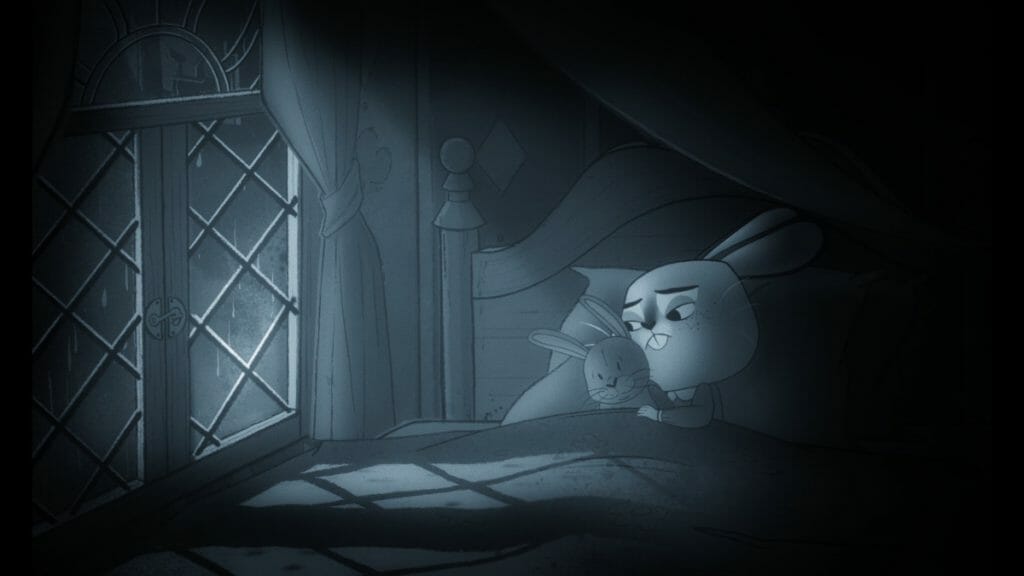
Where Rabbits Come From has a beautiful animation style. Can you tell us about how you decided to approach the look of the film, and what that approach does for the story?
Colin: I’d say the look of the film was inspired by the artistically rich works I watched in my childhood, such as Nightmare Before Christmas, 101 Dalmatians and Howl’s Moving Castle. I wanted to create a fantasy world that was both detailed and immersive, because that’s what I loved about those films.
For me, the art direction of the film was intimately linked to the storyline, as it was necessary to shape the world in which our characters live so that it would be believable, and also so that the audience could feel true empathy towards the protagonists. The dark, gray city of our characters reinforces the idea that fantasy doesn’t exist in this world — and the colors are actually within our characters.
The animation of our characters in their daily lives is reminiscent of a more classical, delicate, and sober style found in the films of Sylvain Chomet. But some of the action scenes are more eccentric, recalling the movement of the characters in Lupin III: The Castle of Cagliostro. Whether it’s the backgrounds, the design of the characters, or even the style of the animation, Where Rabbits Come From is a film that was made with heart and passion, with pure love for the medium of animation.
How did your team blend the use of black and white, shadows, and warm sepia in the film?
Colin: We figured that a world where imagination is prohibited should be colorless, almost lifeless. It really supports the underlying fact that happiness comes from within. The sepia sequences were used to indicate scenes that were flashbacks; memories of happier times. So it made sense to have something a bit warmer than the present. These decisions support the story and fuels the audience’s experience.

What were the most exciting parts of the filmmaking process for Where Rabbits Come From?
Colin: Coming from the live-action world, the process has been refreshing and exciting for me. From the development stage to the sound design, I tried my best to learn and improve my craft. I think an artist can truly flourish in an environment where he’s constantly challenged, and working with so many great talents was a truly enlightening experience. The storytelling potential of 2D animation really inspires me, and it was so beautiful to see the characters come to life in Harmony.
What’s next for Where Rabbits Come From?
Colin: The film is being distributed by H264. Our plan is to release the film on the festival circuit in 2023. Readers can follow our social media pages to get the most recent news regarding upcoming screenings in Canada and abroad.
- Interested in learning more about Studio Niloc? Visit their website to see more of their work.
- Ready to use Harmony to animate your next project? Download a 21-day trial.


